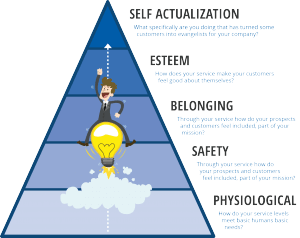Is it worth investing in your customer service system?
Ask anyone when they received the best customer service. Odds are, they will regale a story about a company that reduced a charge, or an airline that held a flight and saved their day.
Ask them whether they’ll continue buying from that company and you’ll hear about their deep loyalty and how much they recommend or repeatedly buy from that company.
On the other side of that coin is the question, when have you received terrible service?
The answer will be venomous. Your friend will explain how a company wronged them, kept them on hold and couldn’t answer their questions. And when you ask if they’ve ever gone back, they will explain the “burn notice” they put on that company.
The Impact of Poor Customer Service
When you listen to both answers, the one that provided terrible customer service is what you want to avoid. Sure, we evangelize great customer service, but we will let anyone who has ears know about the terrible customer service we were given.
Companies live and die by their customer service. Of course, we all want to run companies that people brag about because of how well we do.
The good news is that service can be the first thing your organization systematizes to ensures consistent excellent customer outcomes every single time. Here’s a simple six-step process to building your customer service system.
(Read more about poor customer service policies and procedures here.)
How to Set Up a Customer Service System in Your Business
Want to provide the type of customer service that gets people talking? Here’s how to do it.
1. Do Your Research
Take time to research the level of customer service that major corporations are offering, both good and bad. What highlights do you see? When do you see customer service elevated to a place where customers brag about it? When do you see customer service take a terrible turn?
One site that can help you see what others say about businesses is: http://consumerist.com/. Also try searching a company’s name on Facebook or Twitter.
2. Define what Great Customer Service Means in Your Business

When you talk about great service, what do you actually mean? One way to think about it is: thinking, feeling and doing. When a customer gets off the phone with your company and the problem is resolved, what do you want them to think about your company? What three words come to mind?
What do you want them to feel about your company? Describe it in one sentence.
What do you want them to do? Do you want them to write a review on Yelp? Fill out a survey? Set up a “target” to aim at good customer service.
3. Evaluate what you’re already doing
What is your current strategy for customer service?
What’s the system? Ask questions like, who services the calls? How much training does your team receive to resolve issues, answer questions and represent the company well?
Also, take a look at how fast you respond to customer concerns. Do you get back to them the same week, the next day or the following day?
4. Train and Empower Staff to Provide Excellent Customer Service
If your employees do not have much training around customer service and a solid knowledge base of your company, problems will arise quickly. Look over the training they receive and see if it aligns with what your company represents.
I also encourage owners to give staff the freedom to make decisions when it comes to small solutions that will appease the customer (small discounts, special requests, shipping costs, etc.). These small, quick solutions can have instant impact.
Rewarding your employees for solid customer service is highly encouraged— when they understand about the impact their service makes, it can cause them to continue that behaviour, especially after you validate it.
5. Review Your Ratings
Social media can also provide answers—how are your Yelp reviews when it comes to your business. Are there other social media outlets your company is involved in that have feedback.
Make sure someone is monitoring your company on social media, and can help resolve the criticisms your business receives.
6. Just Ask!
One of the best ways to capture how your company is currently doing on customer service is to simply ask them. Those surveys at the end of a call can be a nuisance, but most people respond if they are sent an email with a simple “How did we do?” and a rating of 1-5. Or online, if a customer needs to only click one button, they are more likely to respond.
You want your survey system to be quick and not time consuming. You also want outlets for people to respond—you also want a place for customers to explain how they feel and maybe how their continuing problem can be resolved.
Using a website page for these emails can help expedite and help your customer service. If your company uses Facebook and Twitter, you need to have a device like a tablet that alerts an employee to when someone has posted about your company.
What to do if you get negative reviews in public?
You may hesitate to allow public reviews of your business. What if you get a negative review?

If there is something negative to be said about your service, the irritated customer is likely to spread the word anyways. If you’re encouraging feedback from your customers, they may at least complain directly to you, where you can try to help.
If you get a less-than-glowing review in a public space, take the opportunity to try to resolve it. Yes, people can see the complaint, but it can be powerful if you can create a resolution for everyone to see.
By creating solid customer service, you can grow your business by word of mouth quickly (which saves money on your marketing budget). Having a solid training when it comes to customer service where your employees can interact in a positive fashion as well as be knowledgeable will create a great customer service base. Monitoring your social media, finding dissatisfied customers and solving their issues can help your reputation and prevent something going “viral” that is harmful to your reputation.












